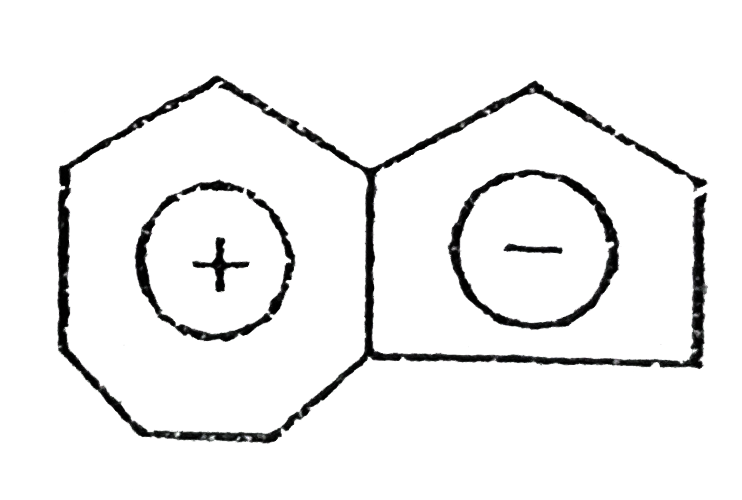Statement-1: CH4,CO2 has value of Z (compressibility factor) less than one, generally. Statement-2: Z<1 is due to repulsive forces among the molecules.
If both the statement are TRUE and STATEMENT-2 is the correct explanation of STATEMENT-1
If both the statement are TRUE but STATEMENT-2 is NOT the correct explanation of STATEMENT-1
If STATEMENT-1 is TRUE and STATEMENT-2 is FALSE
If STATEMENT-1 is FALSE and STATEMENT-2 is TRUE
The correct Answer is:A
To analyze the statements regarding the compressibility factor (Z) of CH₄ (methane) and CO₂ (carbon dioxide), we can break down the solution step by step:
Step 1: Understanding the Compressibility Factor (Z)
The compressibility factor (Z) is defined as:
Z=PVnRT
Where:
- P = pressure
- V = volume
- n = number of moles
- R = universal gas constant
- T = temperature
For an ideal gas, the value of Z is equal to 1.
Hint: Remember that Z indicates how much a real gas deviates from ideal gas behavior.
Step 2: Evaluating Statement 1
Statement 1 claims that CH₄ and CO₂ have a compressibility factor (Z) less than 1 generally.
For real gases, Z can be less than, equal to, or greater than 1 depending on the interactions between gas molecules. If Z < 1, it indicates that the gas is more compressible than an ideal gas, which typically occurs when attractive forces between molecules are significant.
- CH₄ and CO₂ are both real gases and exhibit attractive forces due to their molecular interactions.
Hint: Consider the nature of intermolecular forces in CH₄ and CO₂ to determine their compressibility.
Step 3: Evaluating Statement 2
Statement 2 states that Z < 1 is due to repulsive forces among the molecules.
This statement is incorrect. A compressibility factor (Z) less than 1 is primarily due to attractive forces between molecules, not repulsive forces. Repulsive forces would cause Z to be greater than 1, as they would resist compression.
Hint: Recall that attractive forces lead to a decrease in volume and thus a lower value of Z.
Step 4: Conclusion
- Statement 1 is True: CH₄ and CO₂ generally have Z < 1 due to significant attractive forces.
- Statement 2 is False: Z < 1 is due to attractive forces, not repulsive forces.
Thus, the correct answer is that Statement 1 is true and Statement 2 is false.
Final Answer
- Correct Option: Statement 1 is true, Statement 2 is false (Option C).
The compressibility factor (Z) is defined as:
Z=PVnRT
Where:
- P = pressure
- V = volume
- n = number of moles
- R = universal gas constant
- T = temperature
Statement 1 claims that CH₄ and CO₂ have a compressibility factor (Z) less than 1 generally.
Statement 2 states that Z < 1 is due to repulsive forces among the molecules.
- Statement 1 is True: CH₄ and CO₂ generally have Z < 1 due to significant attractive forces.
- Statement 2 is False: Z < 1 is due to attractive forces, not repulsive forces.
- Correct Option: Statement 1 is true, Statement 2 is false (Option C).
Topper's Solved these Questions
- GASEOUS STATEBOOK - NARENDRA AWASTHI ENGLISHCHAPTER - GASEOUS STATEEXERCISE - Subjective problems
15 Videos
- GASEOUS STATEBOOK - NARENDRA AWASTHI ENGLISHCHAPTER - GASEOUS STATEEXERCISE - Match the Column
7 Videos
- ELECTROCHEMISTRYBOOK - NARENDRA AWASTHI ENGLISHCHAPTER - ELECTROCHEMISTRYEXERCISE - Subjective problems
14 Videos
- IONIC EEQUILIBRIUMBOOK - NARENDRA AWASTHI ENGLISHCHAPTER - IONIC EEQUILIBRIUMEXERCISE - Subjective problems
1 Videos
Similar Questions
Statement-1 : CH4 and CH2F2 are having regular tetrahedron geometry.
Statements: 2 Both are having same hybridization.
View SolutionThe compressibility factor (Z) of real gas is usually less than 1 at low temperature and low pressure because
View SolutionStatement-1: Hydroxides of group-2 are less soluble in water than hydroxides of group-1.
Statement-2: CaF2 is least soluble in among other fluoride of group-2.
Statement-3: Li gives red coloured flame.
View SolutionStatement-1: CH3−O−CH2 is more stable than O=O∣N−CH2
Statement-2: is antiaromatic molecule
is antiaromatic molecule
Statement-3: Phenoxide is more stable than ethoxide
View SolutionStatement-1: Fluorine has less electron affinity than chlorine.
Statement-2 : Due to small size, more electron-electron repulsions are observed in F.
View SolutionStatement-1: Lattice energy of Na2SO4 is less than its hydration energy.
Statement-2: lattice energy of BaSO4 is less than its hydration energy
View SolutionStatement 1: H2 molecule is more stable than H2−He molecule
Statement 2: The antibonding electron in H2−He molecule destabilizes. It.
View SolutionStatement-1 : Nitrogen and oxygen have nearly same size.
Statement-2 : Electron-electron repulsions tend to increase the size.
View SolutionDominance of strong repulsive forces among the molecules of the
gas (Z= compressibility factor)
View SolutionDominance of strong repulsive forces among the molecules of the gas (Z= compressibility factor)
View Solution
